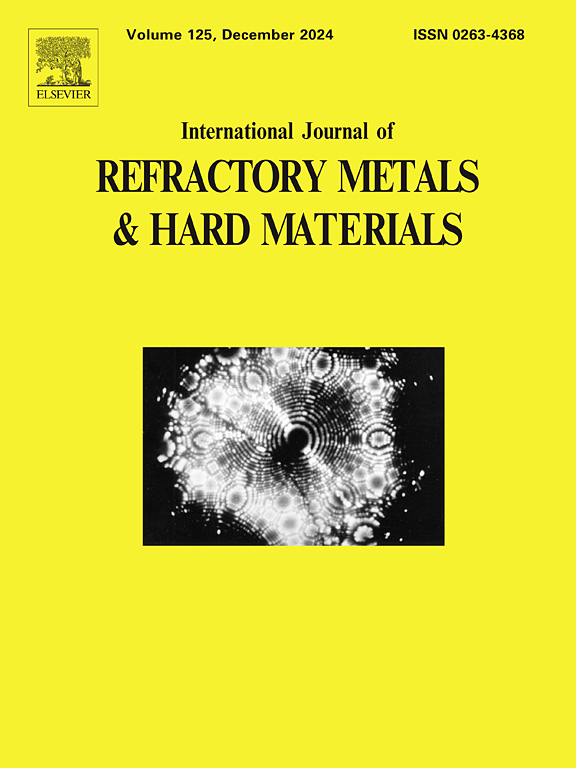Performance of PCBN tools in dry cutting iron-based superalloy
IF 4.2
2区 材料科学
Q2 MATERIALS SCIENCE, MULTIDISCIPLINARY
International Journal of Refractory Metals & Hard Materials
Pub Date : 2024-12-03
DOI:10.1016/j.ijrmhm.2024.106986
引用次数: 0
Abstract
A range of PCBN tools were utilized for turning iron-based superalloy in dry environment and their cutting performance was researched from the perspective of tool wear, tool life, cutting force, cutting temperature, and machined surface roughness. The experimental results revealed that the cutting temperature increased, while the resultant cutting force exhibited an initial rise followed by a decline as the cutting speed increased. The PCBN tools with TiC or TiC+SiCw ceramic bonding agent and low CBN content (≤65 %) were chipped and even fractured in the preliminary stage of the cutting process and were not suitable for cutting the iron-based supperalloy. The PCBN tools with Co-W-Al ceramic bond agent and high CBN content (85 %) performed well in the cutting process, while for every 50 m/min increase of cutting speed, tool life was reduced by approximately a half. An exceptional surface quality could be achieved using this specific type of PCBN tools. However, once the wear value of the flank faces reached about 0.25 mm, the surface roughness began to increase noticeably. In order to achieve higher surface quality, the suggested cutting time for continuous dry cutting iron-based superalloy using the PCBN tools at different cutting speeds was obtained. Rake face wear was dominated by adhesion, chipping, flaking and grooving, and built-up-edge and microcracks also appear at relatively higher cutting speed. Flank face wear showed brittle flaking off at the lower cutting speed (50 m/min), while when cutting speed was increased (100 m/min-200 m/min), abrasion and adhesion wear were dominant.
求助全文
约1分钟内获得全文
求助全文
来源期刊
CiteScore
7.00
自引率
13.90%
发文量
236
审稿时长
35 days
期刊介绍:
The International Journal of Refractory Metals and Hard Materials (IJRMHM) publishes original research articles concerned with all aspects of refractory metals and hard materials. Refractory metals are defined as metals with melting points higher than 1800 °C. These are tungsten, molybdenum, chromium, tantalum, niobium, hafnium, and rhenium, as well as many compounds and alloys based thereupon. Hard materials that are included in the scope of this journal are defined as materials with hardness values higher than 1000 kg/mm2, primarily intended for applications as manufacturing tools or wear resistant components in mechanical systems. Thus they encompass carbides, nitrides and borides of metals, and related compounds. A special focus of this journal is put on the family of hardmetals, which is also known as cemented tungsten carbide, and cermets which are based on titanium carbide and carbonitrides with or without a metal binder. Ceramics and superhard materials including diamond and cubic boron nitride may also be accepted provided the subject material is presented as hard materials as defined above.

 求助内容:
求助内容: 应助结果提醒方式:
应助结果提醒方式:


